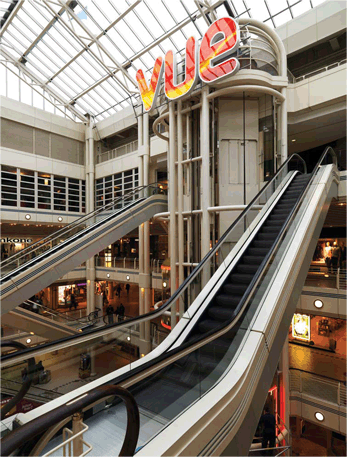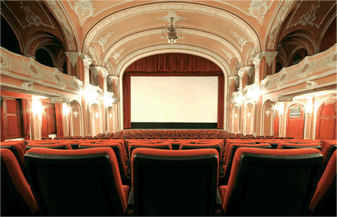Boutique Venues May Provide Opportunities In The Movie Market
It’s no secret that the movie industry has faced its fair share of challenges over the last while—long before the recession had the chance to make an impact on construction and ticket sales. A saturation of megaplexes in the market, combined with the issues surrounding online streaming and illegal downloading has resulted in a struggle that has not only pitted movie-goers against studios and cinema operators, but operators and studios against each other as well.
A recent development involving the Motion Picture Association of America (MPAA) has only served to heat things up even more. In November, the organization filed a petition with the Federal Communications Commission (FCC) for the transmission of first-run movies directly to consumers. If approved, this means that consumers would be able to view new films in their homes at the same time they are released at the box office.
A number of operators have responded to these issues by offering a cinema experience that differs from the traditional popcorn-and-soda approach to movie-going. Steve Shurtz, cinema manager at Meyer Sound, noted that there is a trend toward smaller VIP rooms, often labeled ‘Platinum’ or ‘Gold’ rooms, which provide a more intimate setting and higher-end concessions. “This will have an increasing effect on lesser cinemas as people say, ‘I’ll wait and see it at home. What I have at home is as good an experience or, in some cases better, than a poorly maintained theater,’” he illustrated. “On the other hand, watching a movie at home doesn’t really replace the shared experience and the immersive sound of a large theater. If it’s a quality offering, there is still going to be a preference for those theaters and I think these venues will do O.K.” At the same time, Shurtz observed that Meyer Sound has seen more movement in the smaller room market internationally, in countries like Canada, Mexico, and the United Kingdom.

Vue Entertainment selected Martin Audio to provide cinema sound systems for its Princes Quay Hull cinema, Europe’s first new-build, all-digital multiplex cinema. Designed for behind the screen placement, Martin Audio’s narrow-profile, three-way, THX-approved Screen 5 and Screen 4 systems loudspeakers have been purpose built for cinema environments.
In Europe, this has translated into boutique cinemas—single-screen, specialty venues that often focus on repertory or art house films. “There are even dinner cinemas, where you have a dining experience while watching a classic movie at the same time,” noted Simon Bull, director of sales at Martin Audio in the U.K. He added, however, that in order to remain ‘boutiques,’ they can’t be as aggressively built out as the multiplexes were. “The fact that they are niche cinemas is what gives them the attraction. There is room for some inventive, clever ideas so that people can go out and have a good experience with cinema, but if that gets overrun, it could become like the multiplexes.”
Traditionally, large cinema chains have kept audio/video integration inhouse, while the small to mid-sized operators enlist the services of companies specializing in cinema AV. With the conversion to digital, this latter category continues to rely on cinema specialists to walk them through a new process that involves digital projection, 3D units, servers and encryption. Smaller facilities must also deal with modifying X-curve audio equalization standards for playback, since their venues must be tuned differently than larger rooms. Compression, or lack thereof, also presents new audio challenges for cinemas as they now receive uncompressed AES soundtracks that place large demands on the sound system.
François Godfrey, director of sales, cinema at QSC Audio Products said that even with these developments, traditional cinema dealers are being squeezed out of the market. “Only the strong, dedicated cinema dealers are surviving in that market right now,” he said. “Trying to get into that cinema market as a reseller is tough.”
Shurtz noted that a number of opportunities lie in simulcasting. “If you have a digital cinema system that is of high enough presentation quality, you could set up not only a playback of shorts and have that as something that would attract a particular demographic of that movie thrown in as a bonus,” he illustrated. Beyond this, exhibitors could hold simulcasts of live events: if, for example, a certain recording artist is staging an exclusive concert across the world, consumers could view it in real time at their local theater, complete with high-quality picture and sound.
Much of this, however, is in the hands of the operators themselves, and how creative they are willing to be to fill seats. “There was an oversupply, and a lot of rooms were poorly built acoustically,” Shurtz said. “These are going to be the theaters that fold. The ones that will survive are the ones that are well built or those that put some infrastructure in for this. That creates work.”










